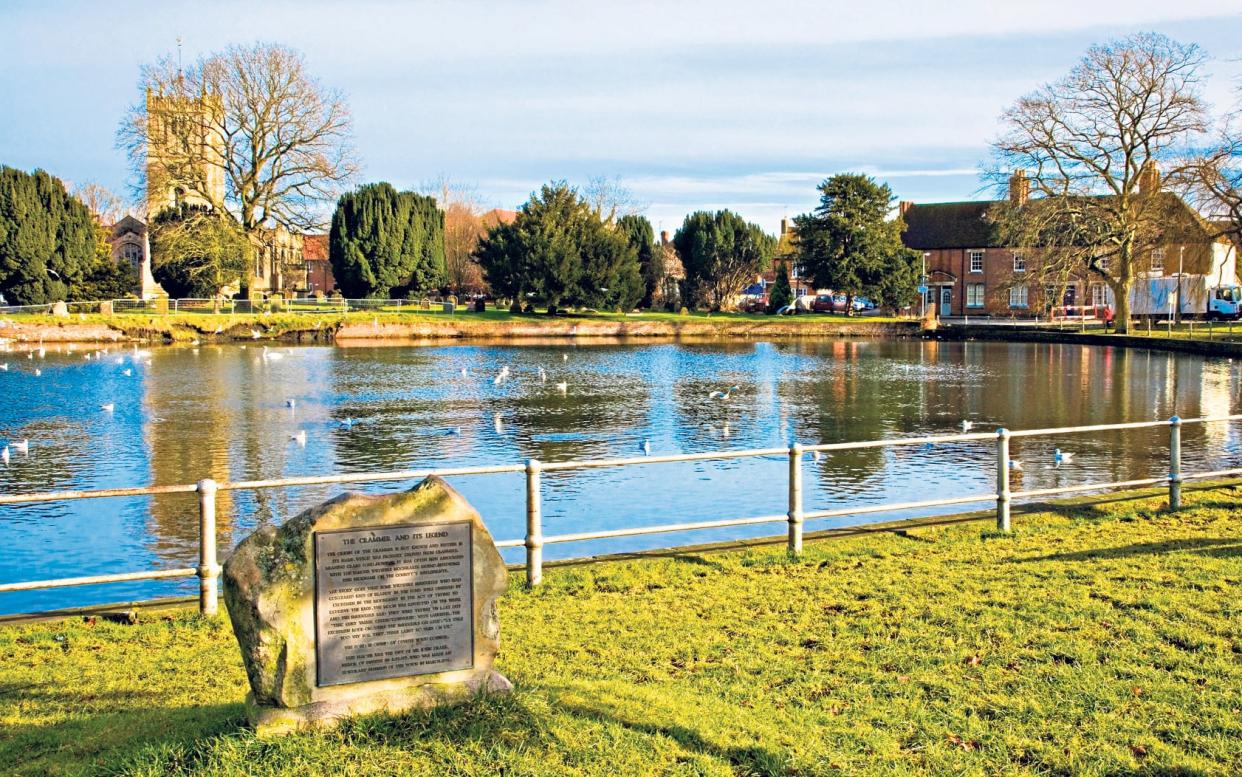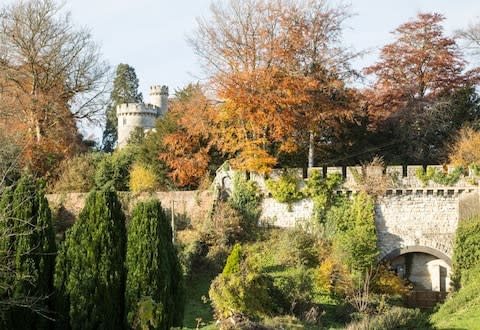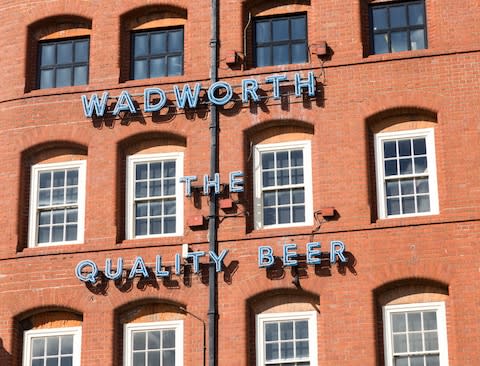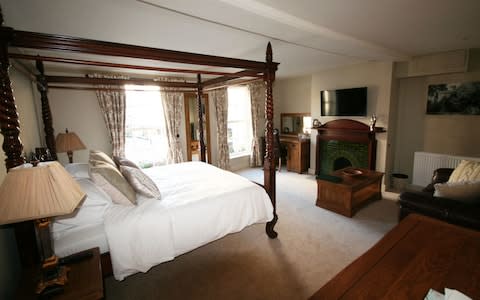The Wiltshire town famous for bumbling low-level criminality

It was a moonlit night in the 18th century or thereabouts, and some ne’er-do-wells of Devizes were up to no good. Their town, traditionally the gateway to the West Country, was part of a smuggling route from the continent to the capital, and they had hidden kegs of French brandy – contraband – at the bottom of a local pond.
That night, with the full moon’s reflection lain starkly on the surface of the pond, the locals went to dredge up the barrels. As they went about it, though, scraping the pond bed with rakes, they were spotted by some customs officials. The officials challenged the men. What were they up to?
One of the men had an enterprising answer. They were trying, he said, pointing to the moon’s bright, bobbing reflection, to rake “thik gurt yaller cheese.”
Laughing, the customs officers left them to it. The smugglers had avoided punishment, and Devizes had been given one of its top two tales of bungling nocturnal criminality.
The other entry in that top two was a little more recent. In September, the Rev Dr Keith Brindle was leading an overnight prayer vigil in St James’ church, which stands by Crammer Pond. The pond, by some magical quirk of cosmic buffoonery, is the same pond that, according to local legend, was the scene of the moonraking incident.

It was of course the night of the prayer vigil that a pair of would-be thieves attempted to steal lead from the church roof. Rev Brindle heard them and called the police. Two arrests followed. “They were caught lead-handed,” quipped Rev Brindle afterwards.
Mostly because I hoped to witness further incidents of bumbling low-level criminality, it seemed like a good time to visit Devizes. It’s a very old market town, with even older remnants of Neolithic civilisation in the farmland around it. Although it’s hardly a tourist magnet, it has, at the very least, a gentle pull. Within a shortish walk of the elegant, episcopal-looking market cross, there are some scenic Georgian buildings; a big, old, red-brick brewery whose spores, in the form of its local pubs and their artful hanging signs, are dispersed across Devizes; there are several markets, notably the big weekly one and a daily covered market; and there’s an entertaining local history, well-told by the museum.

For instance, the town had a massive Norman castle, which sat on the divide (hence Devizes, apparently) between three parishes, was vigorously fought over by William the Conqueror’s grandchildren, one of whom gave Devizes its market charter, and was destroyed, having been a Royalist stronghold, by Oliver Cromwell.
I’m sure Cromwell would be aghast if he knew, but in doing so he deprived Devizes of what would probably still be its main tourist attraction. A pompous replacement was built on the site in the mid-19th century, but it’s privately owned, unfortunately, which meant we had to find some other things to do. Here they are:

Seven fine reasons to visit Devizes
The longest continuous flight of locks in the country
Caen Hill Locks, just outside Devizes, comprise a giddy succession of 29 near-identical locks. It’s a magnificent feat of Victorian engineering, the final piece of the Kennet & Avon canal and the only way they could overcome the steepness of Caen Hill. It’s a two-mile walk past lock after identical lock… or a six-hour boat trip.

The brewery
Wadworth Brewery, which still employs two shire horses to deliver beer to its local pubs, runs tours at 11am and 2pm every day except Sunday.
The barrow
I’m not saying that I visited the Long Barrow at All Cannings – which is a modern burial site, mimicking prehistoric barrows, for modern people’s ashes – out of the misguided belief that it was genuinely ancient (no wonder it looked so well-preserved!), but if I had done that, which I didn’t, then I would have found it interesting anyway. Those looking for bona fide Iron Age remains can try the hill fort at Roundway Down, a 20-minute drive away.
The museum
Wiltshire Museum houses some remarkable prehistoric artefacts – this is Stonehenge country, after all – including a massive, delicately crafted gold lozenge that was created more than 3,700 years ago. The museum will eventually move to the fine neoclassical building that is Assizes Court (currently a very grand building site), but a visit to its current abode is still an enriching use of a tourist’s time.
The market
Devizes’ main outdoor market is held every Thursday. If you miss it, you can visit the Shambles, which is a covered market with flagstones, whitewashed walls and a high ceiling. On the day we visited, there were traders selling books, candlesticks, coal scuttles, cutlery and other metallic knick-knacks.

The pond
If you’d like to see the scene of the moonraker legend, having been warned that it has nothing to do with the James Bond film of the same name, then visit Crammer Pond, which is a part of a green known as The Green. It’s a half a mile from Market Place and has a weeping (but charming) willow and a few swans. You’re probably more likely to find a shopping trolley at the bottom of the pond than a keg of brandy, but by all means try.
The restaurant with rooms
The Peppermill offers light lunches and full-on roasts, plus seven bedrooms to sleep it all off. The building dates back to 1452 but the rooms are thoroughly modern, with luxury linens, huge beds and underfloor heating in the bathrooms.

